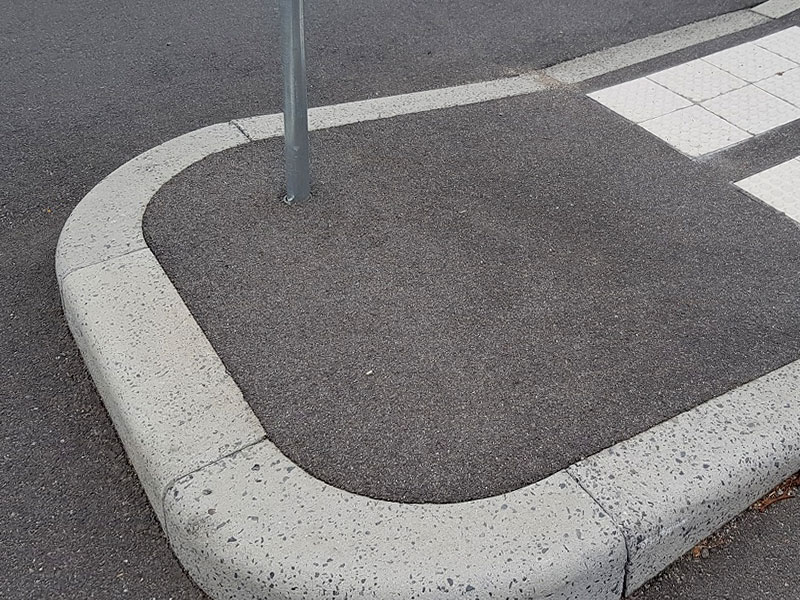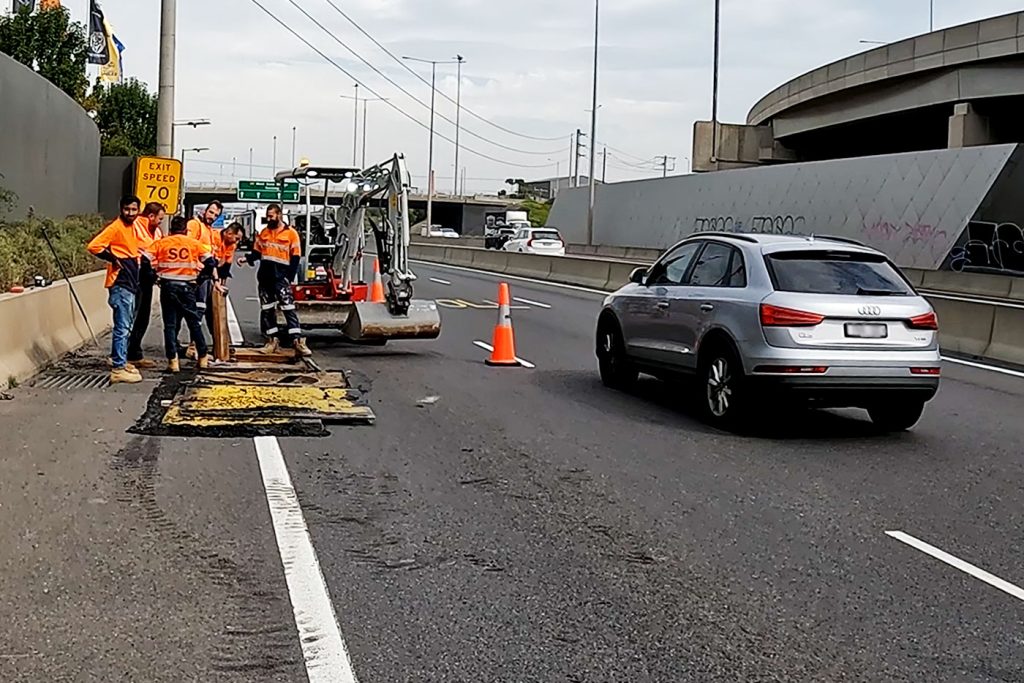Produced in a special exposed aggregate finish, SVC’s range of precast concrete metropolitan kerbs offers a visually appealing alternative to traditional concrete kerbing poured on-site during construction. Specified in the City of Melbourne’s standard drawing package, SVC precast kerbs have been deployed in the CBD and surrounding suburbs for many decades.
Our precast kerb units can be used in various roadside applications including footpath edging, nature strips, traffic medians and garden beds. Our metropolitan kerbs are available as straight or curved units with multiple radii on offer, supporting a variety of traffic island configurations.
Compared to a standard in-situ kerb installation which features a plain, off-form finish, SVC’s precast metropolitan kerbs are produced in a shot-blasted exposed aggregate finish, which adds a layer of design complexity and interest. Precast concrete kerbs also possess superior strength properties than in-situ kerbing due to the controlled manufacturing process, which is conducted in a protected environment away from outdoor elements. The high-strength 40MPa concrete in our precast kerbs ensures their long-lasting durability, and the uniformity of each unit creates a seamless finish post installation.





